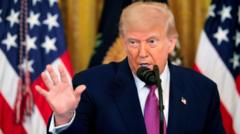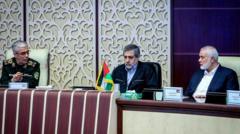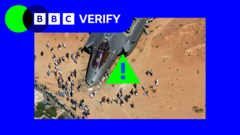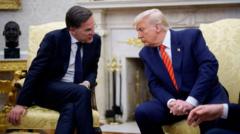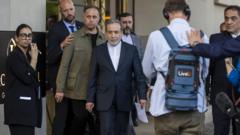US President Donald Trump has confirmed military strikes on three key nuclear sites in Iran as tensions escalate between Iran and Israel. The attacks on significant facilities such as Fordow and Natanz risk provoking retaliation from Iran, with potential threats to US military assets in the region.
Escalation of Tensions: US Strikes on Iran's Nuclear Sites

Escalation of Tensions: US Strikes on Iran's Nuclear Sites
A detailed analysis of the recent US military strikes on Iranian nuclear facilities, including the implications for regional security and the ongoing conflict with Israel.
The recent military strikes by the United States on Iranian nuclear sites mark a profound escalation in ongoing hostilities, particularly amid the fraught backdrop of US-Iran tensions and Israel's military engagements. President Donald Trump took to Truth Social to announce the successful completion of the attacks, focusing on three vital nuclear sites: Fordow, Natanz, and Esfahan. "We have completed our very successful attack... All planes are now outside of Iran air space," he stated.
The strikes appear to have unfolded following an earlier Israeli incursion that aimed to dismantle Iran's nuclear program, prompting an Iranian response involving rocket and drone strikes targeting Israel. Observers note that the intensifying discord between these nations has persisted over a week, with both sides committing to aggressive military maneuvers.
In a twist to the narrative, while Trump has long proclaimed his opposition to Iran's nuclear ambitions, conflicting reports have emerged, particularly regarding Iran's status in nuclear weapon development. Trump recently dismissed claims that Iran is not constructing nuclear arms, countering assessments from US national intelligence officials.
Critical to the US operation is Fordow, a fortified nuclear facility located deeply within mountainous terrain, which has made it largely inaccessible to Israeli airstrikes. With sophisticated US weaponry like the GBU-57 Massive Ordnance Penetrator (MOP) deemed capable of reaching the site's depths, analysts report that two MOPs were deployed for each target in the US strikes.
The on-ground ramifications of these attacks remain murky. Iranian officials assert that preparations had been made ahead of the strikes, claiming minimal damage due to evacuations of personnel and materials from the facilities. However, reports of extensive injuries and fatalities stemming from the ongoing conflict with Israel have raised the stakes significantly, now with over 200 dead and 1,200 wounded since hostilities resumed.
As tensions rise, Israel has tightened its security measures, extending restrictions across the nation in anticipation of potential Iranian reprisals. Speculations abound regarding Iran’s possible retaliatory actions, with serious threats aimed at US military bases and strategic shipping routes in the region, including the vital Strait of Hormuz.
The legal framework governing these military actions poses intriguing questions about presidential powers in the US. While Congress holds the authority to declare war, as Commander in Chief, Trump is positioned to engage forces in military operations without formal Congressional approval. Previous attempts to impede such actions through proposed resolutions appear to remain largely symbolic, lacking a swift resolution given the current urgency of the conflict unfolding.
In an increasingly polarized landscape, young Iranians find themselves divided over the ongoing conflict, caught between an anti-regime stance and the complexities of foreign military interventions. The current state of affairs highlights a potential shift towards greater regional instability, igniting fears of escalating warfare and humanitarian crises that could engulf neighboring countries. As the situation continues to evolve rapidly, global stakeholders are left to ponder the repercussions of these critical military interventions and forecasts for lasting peace in the region.






